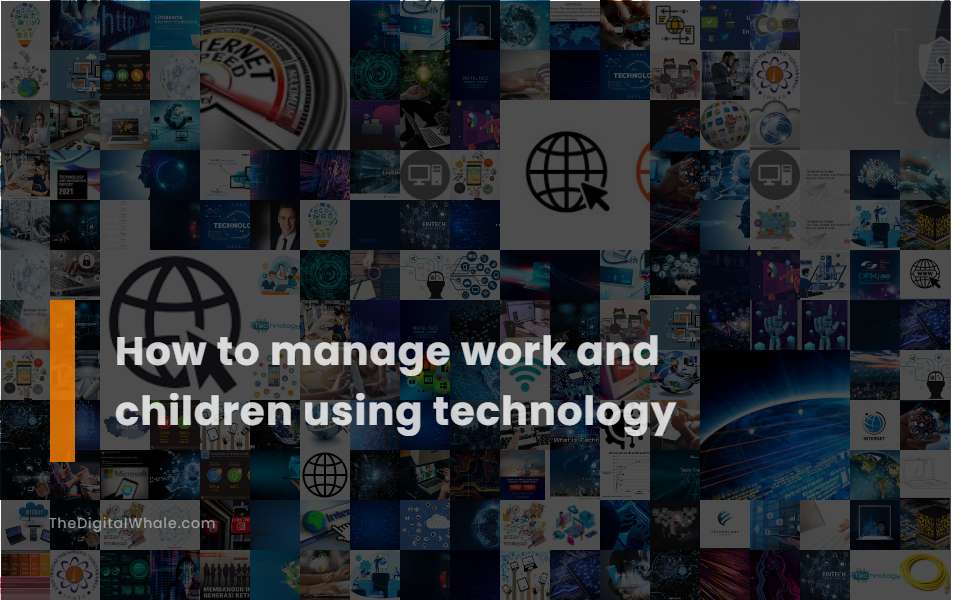How To Manage Work and Children Using Technology
What is a way to put together a puzzle using children's technology? How can parents manage children and their technology? Let's find out more about How To Manage Work and Children Using Technology.

Use Productivity Apps: Tools like Trello, Asana, and Todoist to organize tasks and schedules.
To manage work and children effectively using technology, utilize tools like Todoist, which allows you to add and complete tasks, set reminders, and organize projects. You can also integrate Todoist with other task management tools like Asana, Trello, and Basecamp using Pleexy, creating a centralized hub for all your tasks to enhance productivity and reduce fragmentation.
Streamline Workflow: Utilize tools like Monday.com and Airtable for project management and automation.
Utilizing tools such as Monday.com and Airtable can significantly streamline workflow and project management by automating updates and reminders, while offering real-time insights and analytics. This facilitates better decision-making and collaboration among teams, effectively enhancing both efficiency and work-life balance. By embracing such advancements, professionals can seamlessly integrate technology into their daily routines. For more insights, you can explore this topic in-depth on the Technology and Work-Life Balance page. This approach not only optimizes productivity but also allows for a healthier separation between professional and personal spheres.
Flexible Working Hours: Employ scheduling tools such as Google Calendar, Microsoft Outlook, and Slack.
Managing work and children with flexible working hours can be a challenging task, but it becomes significantly easier by utilizing scheduling tools like Google Calendar, Microsoft Outlook, and Slack. These tools assist in setting work hours, scheduling meetings, and integrating with collaboration platforms to ensure seamless communication and effective time management. Notably, Microsoft Outlook offers features to set and share your work hours and location. It integrates with other tools such as Teams and Google Calendar via Zapier, optimizing your schedule and facilitating effective communication with your team while you manage family responsibilities.
Parental Controls: Implement blocking technology and parental controls to limit screen time.
To effectively manage your child's screen time, it is essential to use parental controls like Google's Family Link app. This tool allows you to set daily time limits, edit weekly schedules, and adjust today's limit. Additionally, you can block specific apps, manage content, and keep an eye on their online activities. Various devices and internet service providers offer Parental Controls that enable you to establish a safe and balanced digital environment by setting time limits, blocking inappropriate content, and managing app access, thus ensuring your child's online safety is prioritized.
Task Prioritization: Use apps like OmniFocus and Microsoft To Do to categorize and manage tasks.
To manage work and children effectively, use apps like Todoist, OmniFocus, and Microsoft To Do, which allow you to categorize tasks by project, set priorities, and assign due dates. These apps help in organizing tasks, reducing stress, and ensuring a balance between work and personal life by enabling the creation of separate projects for different areas of your life. For a comprehensive list of tools that enhance productivity and equilibrium, check out this insightful article on 5 Essential Apps for Boosting Your Work-Life Balance. By utilizing such applications, maintaining a harmonious lifestyle becomes much more achievable.
Related:
What are some of the future IoT trends? What are some of the challenges that the Internet of Things will face in the future? Let's find out more about The Internet of Things and Its Implications for the Future.
Media Consumption Management: Use apps like SquareAll, Cold Turkey, and Feedly to streamline media usage.
To manage media consumption effectively, use apps like SquareAll to consolidate social media accounts, Cold Turkey to block social media during certain times, and Feedly to streamline news and blog updates, helping you save time and maintain a better Work-Life Balance.
Health and Wellness Apps: Utilize apps like Fitbit, Apple Health, and Strava for physical health monitoring.
Managing work and family commitments can be challenging, but the integration of technology has made it easier through various health and wellness applications. Apps like Cleo cater to family wellness, and fitness tracking solutions, such as Fitbit, can be synchronized with Apple Health and Strava, facilitating the monitoring of physical health, steps, sleep, and other fitness metrics. These resources not only assist in maintaining a balance between work and family life but also offer comprehensive tools for tracking health data, managing care plans, and promoting overall well-being. For more information on the most effective wellness apps, visit Nava Benefits for insights on supporting health and happiness.
Pomodoro Technique: Use apps like Focus Booster to work in focused intervals with regular breaks.
The Pomodoro Technique involves working in focused 25-minute intervals, known as pomodoros, followed by 5-minute breaks. This approach helps you manage work efficiently by reducing distractions and mental fatigue. By utilizing apps like Focus Booster, you can implement this technique to stay focused and take regular breaks, which can be particularly helpful when balancing work and childcare responsibilities. For more insights on improving productivity using this method, you can visit the Pomodoro Technique page.
Focus Mode Tools: Leverage 'Focus Mode' features to limit access to non-essential apps and minimize distractions.
Android's Focus Mode helps manage work and minimize distractions by temporarily pausing non-essential apps, silencing their notifications, and allowing users to set scheduled focus periods, ensuring uninterrupted work time even while managing family and personal tasks. For more details, visit the official Android Focus Mode page to learn how this feature enhances productivity and aids in maintaining a balanced work-life environment.
Involve Children in Decision-Making: Engage children in calm and thoughtful conversations about tech management and self-regulation.
Involving children in decision-making about technology use is crucial for fostering responsible habits. By engaging them in calm and thoughtful conversations about tech management and self-regulation, parents can ensure their children are part of setting the rules and understanding the reasons behind them. This approach not only empowers kids to take ownership of their device usage but also builds essential life skills. For more insightful strategies on managing digital devices with children, the article "10 Strategies For Managing Digital Devices" from Smart Kids With LD provides a comprehensive guide to navigating these challenges effectively.
Related:
What are the advantages and disadvantages of virtual and augmented reality in education? What are some potential uses of virtual reality in education? Let's find out more about Virtual Reality and Its Potential In Education.
